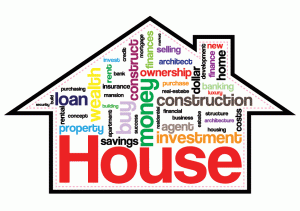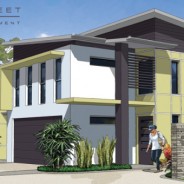Property Development Projects by Malyshka

Malyshka showcases different property developments both past and present. Below is a list of properties including a summary of the project and a link to the property’s website. As part of our property development services we include online marketing so you can expect the same exposure for your project.
We focus specifically on small residential property development in the South East Queensland region – a fast-growing area with huge market demand. Check out some past feasibility studies in this area. However, we’re always interested in other opportunities in many other Australian regions.
Interested in small residential property development? Enjoy a friendly, no-obligation chat with our Managing Director, Grant Muddle. Email: grantmuddle@malyshka.com.au – You may well be surprised at the opportunities that are available to you.
Want to know what’s HOT at the moment? Check out our Current Development Opportunities Page – the latest developments unearthed by Malyshka.
Negative Gearing
Negative Gearing
Negative gearing is a property development strategy that is least understood by many investors. It is often regarded as the investor’s best friend but when executed incorrectly can create significant financial headaches.
Negative gearing is a strategy where an investor buys a property in such a manner that the property costs are higher than the property income. That is, the yearly interest payable on the loan you have taken out to purchase the property and other related expenses involved in property maintenance exceeds the rental income generated by the property each year. With this, you experience a loss of cash however the tax system absorbs the effects of this loss, and ultimately the tax effects reduce your loss. So basically, your rental income and the tax man pay for your investment property!
Tax Benefits of Negative Gearing
The Australian Taxation Office (ATO) allows investors to offset losses incurred from higher property costs to property income against the income from any other source. This might seem very generous of the ATO, however, you must consider several other factors before thinking of using this strategy. When using negative gearing you must always try to balance your repayments. If you fail to plan this aspect effectively, you may end up losing much more than you initially intended.
Earn and Save Taxes at Once?
While many (with a vested interest) might try to sell you negative gearing based on the above statement, you must remember that it is not legally possible to make money and completely save on tax at the same time. The losses incurred in a negative gearing strategy are real, and you will need to physically overcome your tax shortfalls. You may have unrealised capital gains that are not taxable as long as you don’t sell the property. But the problem with an unrealised profit is that you cannot use it easily. Accessing your unrealised profit can be a painful and expensive task.
Negative gearing is an excellent property acquiring strategy but it is designed to incur losses. This means you need to continue to work in order to balance the losses. The strategy alone does not provide enough financial freedom. It definitely helps you build financial success but if you are the sort of person who seeks an early retirement, it is not a complete strategy for you.
Residential Property Development: The Benefits
With rates low, prices falling and the lure of various first home owners grant, getting into the property market now may offer some of the best chances of making money.
The argument has always been that to create wealth in the property market you need to buy well. Once you do that you should always be ahead of the game.
But there is a better way …..
Just like any other investment, residential property development too involves a degree of risk. But when you are developing a residential property you can fully calculate and analyse the amount of risk involved based on certain criteria. These include the features of the property and the prevailing economic climate.
People will always need accommodation , and as a result you can be assured that there will always be demand for residential property. However, getting involved in residential property development involves various risk factors and the benefits can also be slightly curtailed as a result of these. However, here’s a look at the benefits of residential property development.
Manufactured Equity
Manufactured Equity means the difference between the cost of land and the cost of building your project.. In other words, say your land and building costs were around $500,000 and at completion, the bank evaluates the same at $750,000. This gives you Manufactured Equity of $250,000. The ‘instant’ equity property development delivers is far better than buying a property at value and waiting years for capital growth to happen! Personally I am unsure as to why anyone would buy ‘off-the-plan’ or at full value, when you can acquire at a developer cost via property development.
Malyshka helps people with Feasibility Studies, planning and execution to make sure the development project returns the maximum Manufactured Equity possible.
Tax Incentives
During the project, the developer is able to claim back GST for components of the project, the developer can use the “Margin Scheme” to reduce tax payable as well. On completion of the project the Developer can also have access to depreciation costs of the building. The depreciation value of a building is determined by the life of the building and its cost. This value can be legally deducted in the form of expenses. A developer will get this facility from all his projects and can considerably reduce your annual tax.
Building Financial Success: A Journey into Property Development
 With my Superannuation losing value fast, I decided I needed to do something to take my financial future into my own hands.
With my Superannuation losing value fast, I decided I needed to do something to take my financial future into my own hands.
For a long time my father kept telling me: “Forget the stock-market Grant. Live in your superannuation fund, bricks and mortar is the way to go. Buy at the right time and right place and right price, and you can retire a wealthy man. Property is one of the smartest ways to invest your money”.
Having a quick glance at the rich list in Australia and it was clear the majority of their wealth was created in property.
“BRW Rich 200 Members have often turned to the property sector – and become substantially richer.” ~ Business Review Weekly 31 July 2008
Let’s be honest, we all want to be wealthy for a variety of reasons: Family, Lifestyle, philanthropic – me …. I just want to be able to give my family everything I can ….
So I set myself a personal mission statement of Building Financial Success and decided that my dad must be right (there you go dad, it is written down in black and white .. I acknowledge you were right at least once)… and decided I would achieve this mission via Real Estate.
Deciding that was easy … but what next?
What did dad say?
- Buy at the right time;
- Right place; and
- Right price
The first two seemed easy enough, with enough research {and I worked out how to do that too} you can often (not always) find the right time and the right place to buy, but the right price was a challenge to me.
How do I get to purchase at the right price … and right price for me was below market value … at least 15% below .. I liked the buy and hold method so often used, but if I could always buy below market value I would be able to grow my wealth faster … I want to be able to enjoy the wealth, enjoy my families enjoyment of wealth.. not be an old man and never get see the fruits of my labour.
Whilst there are some unfortunate people in some unfortunate situations, but not many people are silly enough to sell below what the property is worth, and even fewer who will sell at a 15% discount to value.
And why would I want a second hand property as an investment? I knew enough to understand buying investment properties brand new was a sound real estate investment strategy as essentially maximising on my depreciation benefits while minimising on my out-of-pocket expenses, given that buying brand new investment properties means generally lower maintenance costs.
So I needed brand new property, in the right place, at the right time at the right price (which I had already decided was at least 15% below value).
Further research showed me that what is not generally known is that the astute property investors on the BRW Rich 200 list are consistently generating safe and higher than average returns not by paying retail prices like most, but by accumulating properties at wholesale via property development.
By acquiring properties via property developments I would be able to grow wealth safely as well as achieve a better return on investment (ROI) enabling me to reach my financial goals a lot faster, allow me to Build Financial Success.
Below is an illustration of the cost savings of acquiring property as a developer at cost price, as opposed to acquiring property as an investor at retail price. For example these are the figures for 1 townhouse in Duplex project in Toowoomba.
Developer Investor
Market value $405,000 $405,000
Less development profit* $87,032 $0
Purchase price $317,968 $405,000
Plus stamp duty $0 $12,600
Plus Legals (Purchase) $0 $3,500
Total cost of property $317,968 $421,100
Net equity $87,032 ($16,100)
* These numbers are based on a project showing a yield of 27.37% on costs.
As the developer I would have acquired my own investment property $103,000 cheaper than a regular retail investor. A basic duplex – two townhouse – project would save me $206,000 and give me at least $174,000 in equity!
There was my answer … I had to get into property development FAST.
Embarking on a journey to become a residential property developer I again came to the stumbling block of how to start, what is the first step?
More importantly, what are all the steps? What are the steps of completing a residential development from beginning to end.
After spending many hours researching via the internet, reading, talking with builders, developers, financiers and of course my dad; I came up with the following 10 Phases of a Residential Development:
1. Identify Site
2. Initial Analysis – Feasibility & Due Diligence
3. Final Analysis – Complete Feasibility and Due Diligence
4. Negotiate & Acquire Property (Subject to finance)
5. Obtain Finance
6. Development Planning & Design
7. Council Approval
8. Pre-Marketing
9. Construction
10. Sales & Marketing
OK, in all honesty, this list was not my first list, in fact I think my list was as simple as:
- Buy a Site,
- Build it,
- Sell it,
- Make a big profit.
But before I spent any money I expanded it and refined it to the 10 points above.
Now having used these 10 steps to completed various projects I am confident they are truly my[1] blue print to Building Financial Success.
I am in no way saying that residential developments are easy, in fact they are not, but you can be successful if you’re prepared to put in the hard work and learn before you get started …. I learned a lot before I started, but I have learned so much more since .. unfortunately some lessons I learned the hard way.
If you’ve got money to invest, are asset rich and time poor, or your superannuation fund (SMSF) has been underperforming, then residential property development is a viable strategy for you too – contact Malyshka today to find out how we can help you acquire your first property at developer cost
[1] My blue print might not be suitable for everyone, and independent advice must be sourced.
Wealth Creation through Property Investment
 Wealth creation through property investment and negative gearing is least understood by many investors. It is often regarded as the property investor’s best friend but when executed incorrectly can create a lot of financial headache.
Wealth creation through property investment and negative gearing is least understood by many investors. It is often regarded as the property investor’s best friend but when executed incorrectly can create a lot of financial headache.
Negative Gearing
Negative gearing is a strategy where an investor buys a property in such a manner that the property costs are higher than the property income. That is, the yearly interest payable on the loan you have taken out to purchase the property and other related expenses involved in property maintenance exceeds the rental income generated by the property each year. With this, you experience a loss of cash but the tax system absorbs the effects of this loss, and ultimately the tax effects reduce your loss. So basically, your rental income and the tax man pay for your investment property!
Tax Benefits of Negative Gearing
The Australian Taxation Office (ATO) allows investors to offset losses incurred from higher property costs to property income against the income from any other source. This might seem very kind of the ATO but you must consider several other factors before thinking of utilising this strategy. When using negative gearing you must always try to balance your repayments. If you fail to plan this aspect effectively, you may end up losing much more than you initially intended.
Earn and Save Taxes at Once?
While many might try to sell you a negatively geared property based on the above statement, you must always remember that it is not possible to make money and save taxes at the same time. The losses incurred in a negative gearing strategy are real and you will need to physically overcome your tax or chash-flow shortfalls. You may have unrealised capital gains that are not taxable as long as you don’t sell the property. But the problem with an unrealised profit is that you cannot use it easily. Accessing your unrealised profit can be a painful and expensive task.
Negative gearing is an excellent wealth creation strategy but it is designed in a way to incur losses. This means you need to continue to work in order to balance the losses. The strategy does not provide enough financial freedom unless you have high income from other sources and get high capital growth. It definitely helps you gain wealth but if you are the sort of person who seeks an early retirement, it is not an ideal strategy for you.
By partnering with Malyshka you will be able to buy property at near developer cost, have cash flow positive property, instant equity and in areas with potential high capital growth
Residential Property Development – The Taxes
Residential Property Development – The Taxes
Residential property development can be very lucrative. In the current poor global economic climate and the constant highs and lows of the stock market, property development is considered by many to be a sound method of building financial success. The number of people investing in property development has increased considerably in recent times, especially since the government has allowed the inclusion of property into SMSF’s. Also with state governments increasing the cash grants for new homeowners, this growing trend, at least in the short term, is in my opinion here to stay.
Whilst property development is lucrative, many first time developers commit “blunders”. Most of these “blunders” are because of the investors’ inability to fully understand the tax laws as set by the ATO (Australian Taxation Office). Residential property is generally exempt from taxes. However, the nature of the development and intended use of the property after its development affects the property’s tax position. Below are some of the common tax pitfalls to avoid when undertaking a property development.
Overview of the ATO Policy
Residential property is commonly exempt from taxes. But if you undertake a developmental project on the property such as a renovation or modification such that it generates profit, the property profits may become taxable. For example, the property is a taxable asset if it is intended for the purpose of running a business. In this case, it may be subjected to income tax, GST (Goods and Services Tax) and also capital gains tax.
Tax Policy for Your Home
The home that you live in is usually not taxable. But if you rent out a portion of the dwelling or use it for any other commercial, it might be taxable. The same applies to inherited dwellings. Any sale of residential property is also subjected to capital gains tax, unless it is solely your principal place of residence.
Tax Policy for Residential Land
Vacant land is generally considered as a capital asset and is subjected to capital gains tax on sale. If you purchase the land for business purposes such as for resale, such land is considered as trading stock and the revenue generated is considered as ordinary income, which is subject to GST. The same rule applies to the subdivision of land.
Malyshka Pty Ltd is not a financial advisor, and nothing contained in this post constitutes financial advice. Everyone is advise to gain professional and independent advice before undertaking any investment of any kind.
Property Investment And SMSF’s
Investment Property and Your SMSF
Property Investment and SMSF’s (self-managed super funds) requires a thorough understanding of the governing rules and laws. Failure to comply with property investment and SMSF’ laws can have serious repercussions to your wealth creation strategies. If you’re able to understand to and can adhere to the laws and complicated regulations, including a property as an SMSF asset can be very beneficial to your wealth creation strategy. Here are a few reasons why it might be beneficial to invest in property through your super.
High Leverage
A property investment and SMSF combination offers the opportunity of a high degree of leverage compared to any other form of investments. As a result you can potentially get very high return on your investment in %% terms.
Safety and Stability
Property prices in Australia are not subject to frequent fluctuations when compared to the stock markets. Most banks consider property as a low risk investment and offer to lend a vast majority of the asset value (leverage). Property bought at the right time, in the right place and the right price tends to increase over a period of time more often than decrease.
No Margin Calls
As the Australian property market rarely wildly fluctuates (unless you over paid for property to start with), banks rarely require property to be re-valued. A consequence of this is that investment properties are rarely subject to any form of margin calls; unlike Option Contracts or CFD’s.
Long-Term Market
As SMSFs are, by name “self-managed”, there is a wide scope for changing the allocation of funds. An investment property, is not a liquid asset does not allow for fast and emotive or reactive changing of fund allocation – it is harder for you to get sucked into the latest investment fad. The long-term nature of the property market is more suitable to those who are wary of the frequent highs and lows of the stock market and like a consistent and proven performing asset class.
Higher Control
For individual investors it is probably impossible to influence the value of shares in your share portfolio – really what can you do to influence the share price of BHP or Westpac bank for example? However, when it comes to property, you can increase its value by developing the land, undertaking a renovation etc. This also applies to any property held under SMSF. But you must take care to comply with all SMSF rules as renovations and improvements are strictly regulated.
Rewards of Residential Property Development
One of the cardinal rules of investing in property is to manage your risk. Generally the lower the risk associated with a particular investment, the lower the return and vice versa. The key to successful investing is to maximise your returns while keeping risk at an acceptable, manageable level. The extent to which you balance these two competing imperatives will depend on your risk appetite.
Residential property development has potential high returns, and risks can be managed to limit detrimental outcomes (as an extreme: bankruptcy) – competent and complete feasibility, use of professionals to forecast costs and times etc. can limit the consequence of things you cannot manage like increased interest rates.
Even though there are numerous risks involved in residential property development, the rewards you stand to gain are much higher – and this is why one becomes a property developer
Cash Flow
A continuous cash flow can be generated from the sale of dwellings, or alternatively a developer can hold the properties for further capital growth and in the waiting time receive an income from rental. As a developer, since any loan will be at cost of the project and not value, your rental should more than cover any interest – hence they should actually produce an net income for you.
Tax Benefits
In addition to the depreciation, a number of other expenditures involving property development can also be deducted as expenses. It is often possible to deduct the development expenses, property rates & taxes and the any payable interest as an expense, ultimately reducing taxable income.
Build Equity
Apart from the Manufactured Equity you make undertaking a development project, you can also keep the properties you develop as long term investments. The value of a property increases essentially based on demand, and in Australia property typically doubles every 7-10 years (depending where in the property cycle you have procured the property). You will be able to use your equity as leverage for bigger projects – if that is your risk appetite.
Leverage
Almost all property developments are built with funds borrowed from a bank or other financial institution. This process is commonly known as leveraging. You can use either your project or equity to gain this leverage and develop the property.
Undertaking property development really can help you build financial success.
Property Development Pitfalls – Lessons for Newbies
Property development is an exciting field. In addition to being potentially lucrative, property development allows people to create buildings that will help serve residents, commerce and the public. Property developers build the infrastructure on which society is built. New property developers, however, often make mistakes that can lead to considerable financial difficulties. Here are some common property development pitfalls.
Is there growth?
No matter how great a piece of land is or how superb the buildings on it are, there must be people or companies that will use it. Apartments and commercial builds do not sell themselves, and there must be sufficient demand to ensure a profitable venture. Property developers must carefully research the land and the areas that surrounds it. While some parts of the Australia are growing at a tremendous rate, there are other areas with negative growth and stagnant economies. Of all the common property development pitfalls, this might be the most dangerous.
What about regulations?
Regulations are necessary to ensure that buildings are safe and will not cause problems. While some cities have few regulations, other make it difficult to secure permits for certain types of buildings. Height restrictions are common, and developers must keep this in mind. Environmental regulations are often strong as well, and these may make the cost of development prohibitively expensive. New property developers are encouraged to talk with town-planning experts before making a purchase or starting construction.
Tax breaks?
Taxes are a major expense of property development. Often, however, governments provide tax incentives for certain types of development or certain building techniques. Buildings designed to have a minimal impact on the environment, for example, may qualify for major tax breaks. Property developers must look for these tax breaks and find out if their buildings can earn these incentives. A tax break, for example, might save enough money to build a more impressive structure that will be more profitable in the long term.
Other investors?
Investment is crucial for succeeding. Too often, however, property developers fail to reach out to others who may be interested in investing in the project. While a small development may be acceptable, new property developers often fail to consider if outside investment could enable them to create more impressive, and profitable, structures. Property developers must ensure that they are getting as much out of their land as possible, and a few extra investors can make the difference between a decent property and one that leads to tremendous profits.
Property development is not for everyone, although almost anyone can do it. Many people use this strategy for the excitement and glamour of it all and that is exactly their undoing.
Eugaree Street – Townhouse Development in Southport, QLD, Australia
Eugaree Street Developments comprises of 5 residential townhouses each of four (4) bedrooms, two and half (2.5) bathroom configuration with double undercover lock-up garages.
The building is to be constructed over two (2) levels.
Each of the 5 proposed townhouses are to be of similar configuration having central open plan kitchen/living/dining areas with direct access onto the side and/or rear courtyards via sliding doors. Hallways have been minimized in the design with the kitchens being a galley style off the living areas with a breakfast bar and the four bedrooms all located upstairs. The master bedroom will have an ensuite.
For more information go to Eugaree Street’s website – Eugaree Street Developments – Townhouses for Sale, Southport, QLD, Australia.




